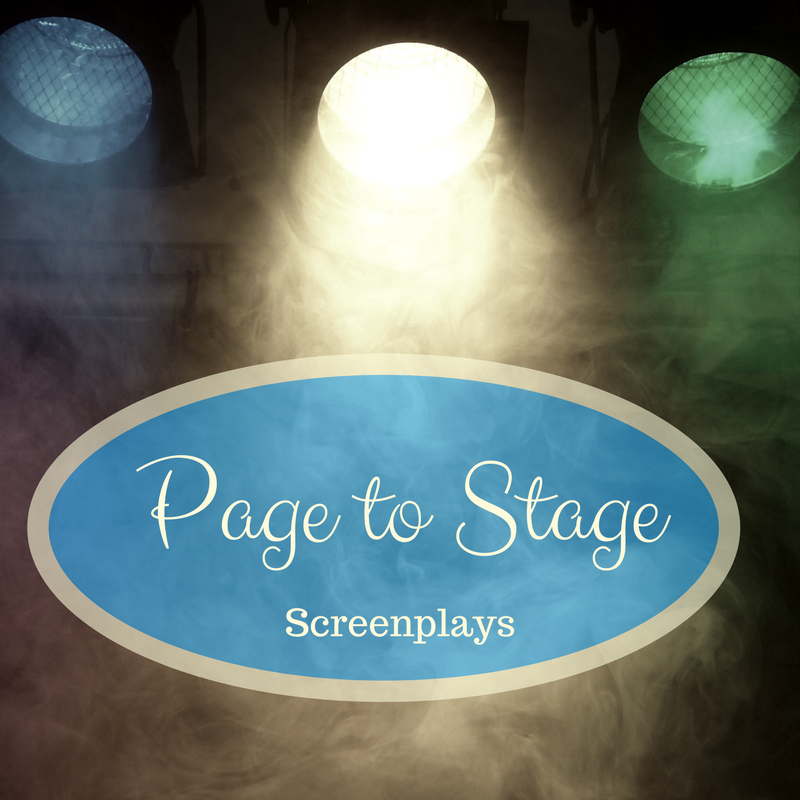Recently, I had a local writer friend reach out to me about how she could adapt her book into a screenplay. I get that question a lot; although I am not a successful screenwriter, people for some reason believe that anyone can write a screenplay, just because they’ve written a story or book.
Just because a book is successful and is a good read, doesn’t necessarily mean it will make a great movie. Studios have lost billions by producing popular books that bombed in theaters. Hollywood generally believes that novelists should not write screenplays.
So this year, I want to explore the basics of screenwriting and some of the different conventions, concepts, and features that novelists may not know about. There may be some similarities, but screenwriting has its own unique needs.
- Tight writing is a must
- A lot more show than tell
While the general rule in storytelling is to always show and not tell, this rule applies more to screenwriting, because screenplays are visual art forms. So in writing a screenplay, writers always must visualize their stories first, this is a basic element of screenwriting.
Elements of Screenwriting
“Screenwriting has no rules, it has conventions to help tell a story.”
Robert McKee
The number one convention of screenwriting is the story is seen. Screenplays are written with characters we will literally see and don’t have to imagine—always write from that perspective. If you cannot visualize your characters on screen, then they won’t parlay to the screen.
Seven tips for adapting a book to a screenplay from the Creative Penn.
- Read screenwriting books- Reading some how-to screenwriting books will give you a solid grounding in writing characters, plot, structure, dialogue, theme, etc. for the big screen.
- Read screenplays- The reason many screenplays fail, whether they’re adaptations or not, is because the writer simply hasn’t read enough screenplays.
- Outline movies- It’s also important to become familiar with movies are put together structurally. Novels may contain some structural tropes within certain genres, such as Mystery or Romance, but screenplay structure is generally much more ‘formulaic’.”
- Write an outline of your novel- Once you’ve spent some time on the first three steps, apply the same principle of writing outlines as described in Step 3 to your own novel.
- Refine your movie’s core conflict- Take some time to think about the story from the point of view of someone watching it up on screen in a movie theater. What’s the core conflict here that’s going to make them pay money to want to go and see it?
- Finalize your outline- Some screenwriters like to write outlines, synopses or treatments of their story before starting on the script. Other’s don’t. But I would strongly advise you have some kind of document to follow while writing the actual screenplay.
- Start writing your screenplay- Once you have your outline, it’s time to finally start writing and I’d recommend purchasing some professional screenwriting software first, such as Movie Magic or Final Draft. (WriterDuet is a great free alternative if you’re strapped for cash.)
Screenwriters know the conventions of the art and resist the need for a formula. As I begin this series, I have to address the age-old debate of structure versus story. Not from my perspective, but that of the greats. While screenplays have conventions, never let structure kill your story.
Screenwriting, as with novel writing, is the art of storytelling. The story must dominate your script. However, according to Screencraft Magazine, “novels focus on the internal emotions of the story’s characters, screenplays are the outer emotions of the story’s characters.”
Story Matters
Typically when novelists try to adapt books to screenplays, they either kill their story by trying to use a bad writing structure or they don’t know a screenplay format at all. Either way, their narrative loses its beauty.
Sometimes no matter who adapts a book to a screenplay, the story just does not work as a movie. The readers’ imagination is better than the visuals on the screen. Before you attempt to adapt your screenplay, read the five story elements needed to make a great film from totalstoryteller.com.
- A sympathetic hero: Having a ‘save the cat’ moment can help you create a sympathetic character. This ‘save the cat’ term was coined and popularized by writer Blake Snyder.
- A vital quest: It’s no joke. There are real stakes to this quest.
- Insurmountable obstacles: It seems impossible for the hero to achieve victory, at least as he is now.
- Surprising ending: Ingenuity and creativity sees the hero achieve victory through unusual means, finding help in unexpected places or with unexpected allies.
- Inevitable ending: The ending is logical. It seems obvious after-the-fact that it would end as it did.
Remember, it is the screenwriters’ job to take these elements and combine them into a visual cocktail to help the audience understand the narrative. It is like combining poetry with painting. Screenwriters need to know the basic elements of screenwriting.

Martin Johnson survived a severe car accident with a (T.B.I.) Traumatic brain injury which left him legally blind and partially paralyzed on the left side. He is an award-winning Christian screenwriter who has recently finished his first Christian nonfiction book. Martin has spent the last nine years volunteering as an ambassador and promoter for Promise Keepers ministries. While speaking to local men’s ministries he shares his testimony. He explains The Jesus Paradigm and how following Jesus changes what matters most in our lives. Martin lives in a Georgia and connects with readers at MartinThomasJohnson.com and on Twitter at mtjohnson51.




No Comments